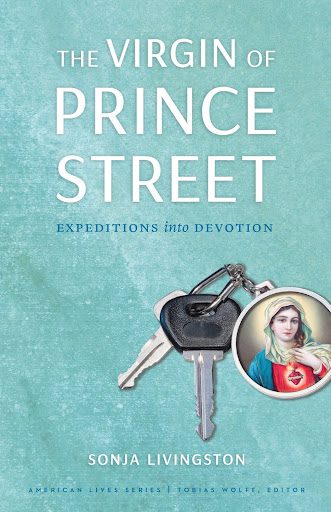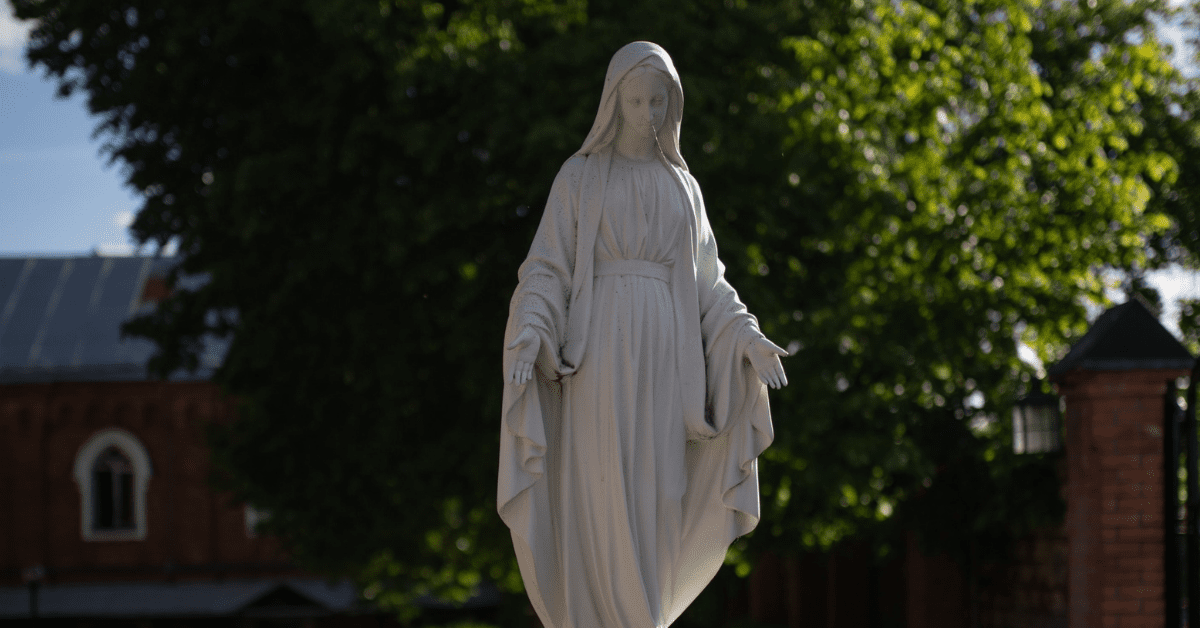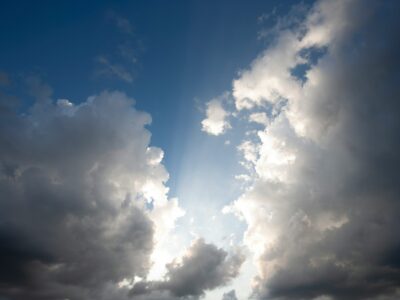As a follower of Christ, I have bounded from Protestant denomination to non-denomination to other denominations since my believer’s baptism at age 20, but my first baptism was in a Catholic church, as an infant. My great-grandmother, Anna B., was born on the boat coming from Czechoslovakia to America. Her family brought with them a committed Catholicism that did not really get carried forward with any seriousness beyond Anna B. Outside of my infant baptism in the church, my closest connection to Catholicism came through my great grandmother’s rosary beads—which seemed to grace every surface in her home, the doe-eyed blond haired Jesus painting hanging in her hallway, and the occasional statue of Mary. All of it spurred a warm curiosity in me as a child, but not hot enough to go hunting for answers or looking for meaning.
That search would begin later and lead in all kinds of surprising directions.
The Virgin of Prince Street: Expeditions into Devotion by Sonja Livingston

I’m drawn now to other people’s faith journeys because each is so unlike another’s. We’re all met by God in some strange and mysterious way. We all choose to look or turn away or wander around for a while, oblivious to God’s presence. But in each of our stories there are these glimpses of divinity, visions of hope and promise, streaks of holiness that highlight the profound love and compassion that is God’s very essence.
The stories I love the most are the ones that admit doubt, wandering, wondering, and bewilderment, which is one of the reasons I was drawn to Sonja Livingston’s The Virgin of Prince Street. Livingston grew up in a poor neighborhood in Upstate New York with a gaggle of siblings and a single mother, but she’s long since left her old stomping grounds, leaving behind her Catholic faith.
Despite the decline in numbers of those who call themselves Catholic and Livingston’s own wandering away from the Church, Livingston found herself back in her childhood parish, Corpus
Christi. “I looked around one Sunday morning, mystified,” Livingston writes. “The rows of empty pews did not baffle me, nor did the worn fixtures or the precariousness of Corpus Christi’s survival. I was surprised only by how much I cared. My attempt to make sense of this lingering connection—the various curiosities and anxieties it unleashed—led to the journeys that follow.”
What Draws Us (Back) to the Road of Devotion?
The Virgin of Prince Street begins with Livingston’s return to Corpus Christi Church in Rochester, New York for a Christmas Mass that turned out to be in Spanish.
“I’d loved the sandstone building on East Main and Prince Streets for as long and as hard as I’ve ever loved anything… But as much as the parish was part of my life, I was never traditionally religious,” writes Livingston. “I was not the swooning type—nor was I ever likely to be—but fast-forward a few decades and there I was on Christmas Eve, stuffed with a sensible sermon and elegant hymns but hungry for something else.”
As she and her husband surveyed the ways the church had changed, Livingston looked all around but could not find the Virgin Mary, or one specific Virgin Mary, that had always been a feature in the church of her youth. Livingston can’t explain the longing to see this statue or why she’s so drawn back to the church, but the hunger for that “something else” drives Livingston forward, to find the Virgin, to begin her expedition into devotion, to open herself to what this world of statues and iconography and saints has to offer her.
“When the norm is walking away, devotion itself becomes a radical proposition,” Livingston writes. “Deliberately embracing one thing—no matter how troubled—caused my appreciation for all things to grow. Such openness cannot be contained. What began as a series of essayistic explorations became acts of reclamation. I too am a dusty pilgrimess, it turns out, who found herself fed by the fruit of abandoned gardens and the swell of underground streams.”
It’s been over 20 years since I became a Christian, and the faith I began to practice then looks vastly different from the one I practice now. I’m far more open to mystery and the broad and diverse ways we all express our devotion to something larger than ourselves. Our journeys of belief are each unique, and if we’re honest, they’re as complex, baffling, riddled with doubt, and blanketed with awe as Livingston’s.
There are days when I am filled with wonder, an “appreciation for all things” that spurs my heart to adoration for the Something Greater I call God, our beacon of perfect love. And there are dark moments when the chaos and trouble of the world seems too much. Why do I even bother? What would my life look like without this devotion to Something Greater?
Despite the trouble, the contradictions and hypocrisy, the countercultural swim upstream that is required in this walk with Jesus, I cannot help but be compelled onward, called into the mystery by the whisper of a loving Savior. I am wooed and hooked and somehow won’t be—can’t be—let go. Grace has gotten hold of me. I can’t unsee the beauty of what I’ve seen.
It is a pleasure to find others who are along for the ride.





 Copyright
2024
Root and Vine
Copyright
2024
Root and Vine